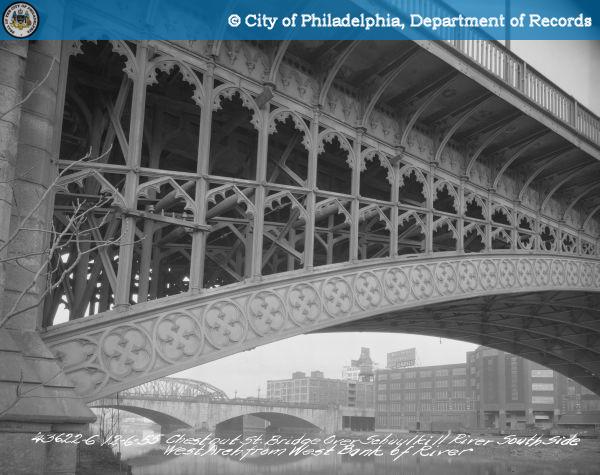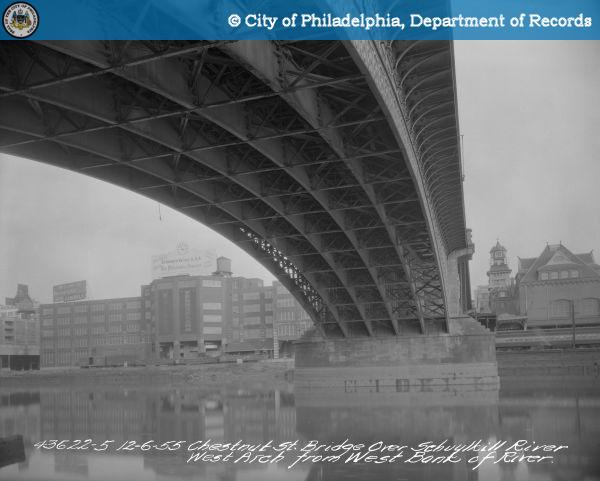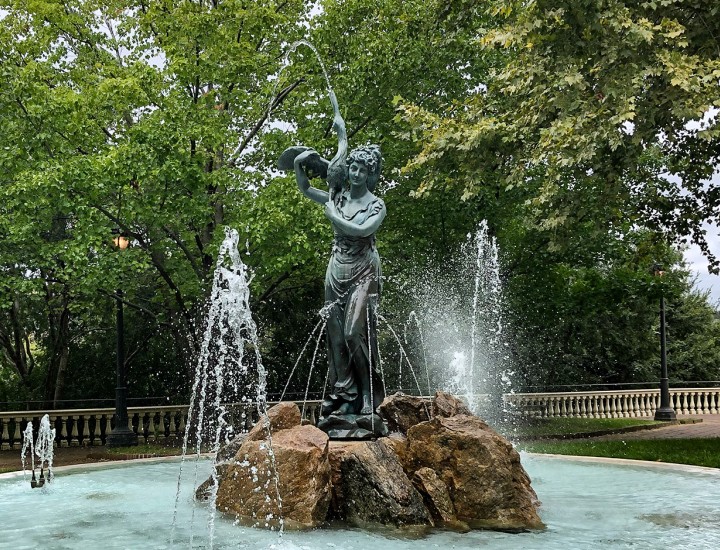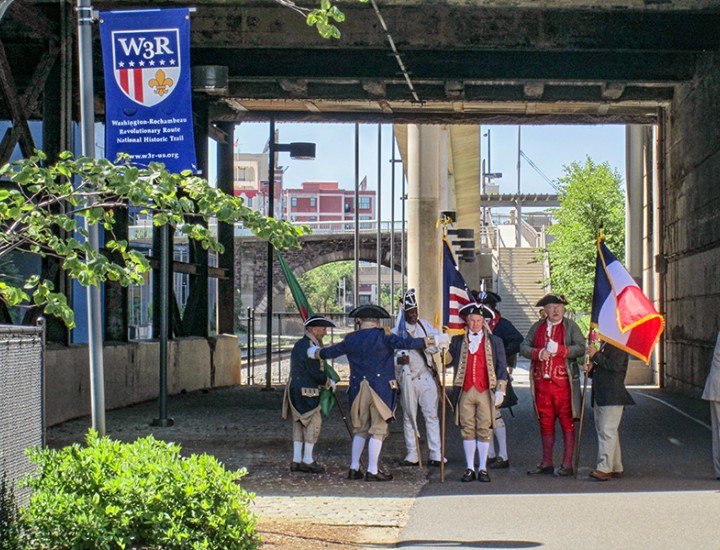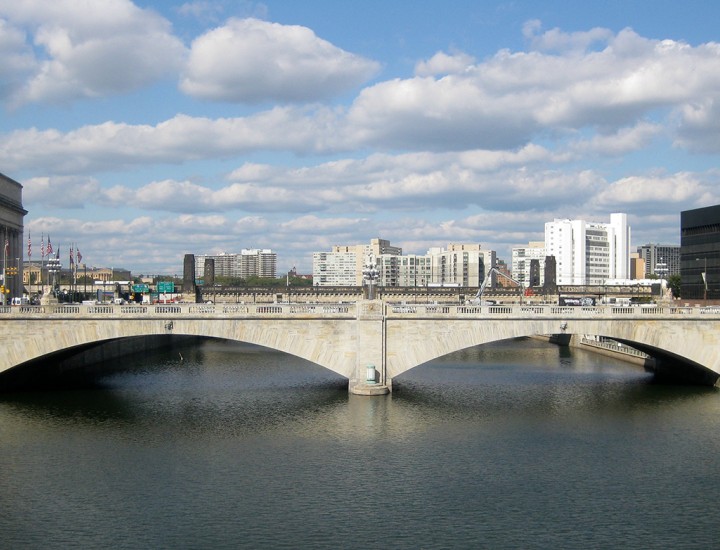The First Chestnut Street Bridge
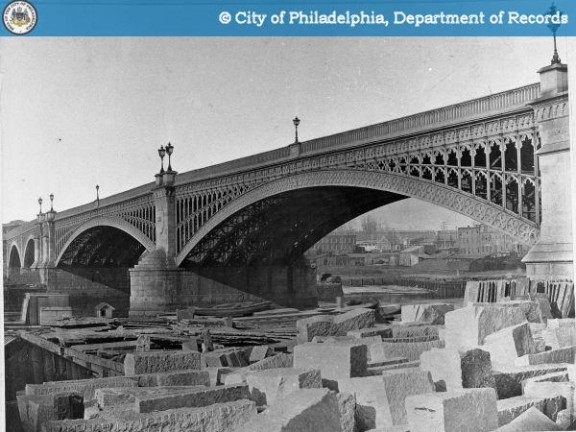
If you look closely at the Chestnut Street Bridge over the tidal Schuylkill, you can find vestiges of what was once considered to be one of the handsomest, strongest, and largest bridges in the country.
The creation of a bridge over the Schuylkill at Chestnut Street was proposed in 1852, but its construction was delayed five years due to budget constraints. At the time, horsedrawn streetcars were popping up all over the city, enabling wealthy and middle class residents to move into new "streetcar suburbs" outside of the City of Philadelphia's original boundaries (what we now know as Center City). As part of its founding charter, the Chestnut and Walnut Streets Passenger Railway Company agreed to contribute $100,000 (the equivalent of nearly $2.9 million in today's dollars) towards the construction of the bridge, helping to make possible the construction of the $500,000 bridge.
The Chestnut Street Bridge was designed by Strickland Kneass (1821-1884). Kneass, the son of an engraver, assisted his older brother with engineering work on the Delaware and Schuylkill Canal and the Philadelphia & Wilmington Railroad before studying civil engineering at Rensselear Polytechnic Institute. There he was taught to think through problems creatively and develop innovative solutions. After graduation, Kneass moved back to Pennsylvania, where he worked for nearly 50 years in both the private and public sectors on a wide variety of infrastructure projects, including railroads, sewers and drains, and bridge building. Kneass became the first Chief Engineer and Surveyor of a newly consolidated City of Philadelphia in 1855, and served as a Fairmount Park Commissioner. He valued beautiful and elegant design, while advocating for safe and effective infrastructure for the growing city.
The main structure of Kneass's bridge over the Schuylkill at Chestnut Street consisted of two granite abutments and a central granite pier, with two beautiful, gothic arched spans, each composed of six cast iron ribs, strengthened by diagonal ribs. The bridge also included two arches on the east bank for the B&O Railroad. Construction began in 1861, the central pier was completed in 1864, and the bridge was completed in 1866. The bridge was built with an unprecedented amount of cast iron, leading to its uniquely beautiful design. It was also overbuilt to ensure safety, with each rib able to sustain a transient load of 486,000 lbs. Despite its strength, the bridge spans and western abutment were demolished in 1985, most likely because that abutment would interfere with the proposed alignment for the Schuylkill Expressway.
You can still see some elements of the original Chestnut Street Bridge today, including the central pier and eastern abutment. A small cast iron section of railing is also still located on the bridge near the ramp down to Schuylkill Banks.

Learn more about the original Chestnut Street Bridge and Strickland Kneass here:
- https://www.phillyhistory.org/blog/index.php/2008/02/creativity-in-cast-iron-strickland-kneass-chestnut-street-bridge/
- http://www.loc.gov/pictures/collection/hh/item/pa1150/
- https://play.google.com/store/books/details/John_Thomas_Scharf_History_of_Philadelphia_1609_18?id=w0sOAAAAIAAJ
- https://www.philadelphiabuildings.org/pab/app/ar_display.cfm/32332
- http://www.phillyh2o.org/backpages/bsar_kneass.htm
- http://uchs.net/sprucehill/significance.htm
Photos from PhillyHistory.org: PhillyHistory.org is a mapping website that allows users to search for, view by location, and purchase thousands of historic photographs dating back to the late nineteenth century.
